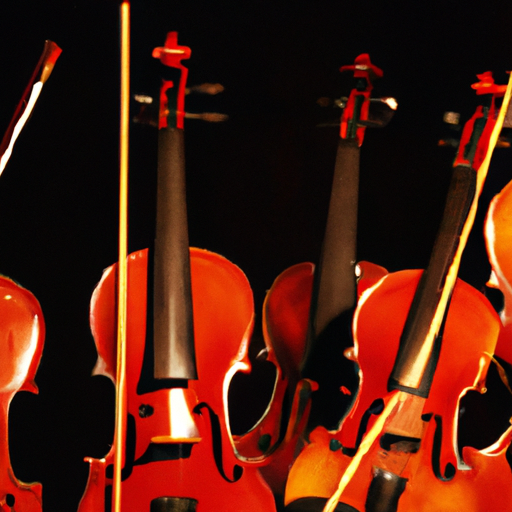
Learning to play the violin can be a rewarding and fulfilling experience. Whether you're a complete beginner or have some musical background, the violin offers a unique and beautiful sound that captivates audiences. However, like any instrument, it requires dedication and practice to become proficient. In this article, we will explore some easy violin tips for beginners to help you get started on your musical journey.

The violin is a string instrument that is played with a bow. It is one of the oldest and most versatile instruments in the world. Learning to play the violin requires patience and perseverance, as it can be a challenging instrument to master. However, with the right techniques and practice, anyone can learn to play the violin.

One of the most important aspects of playing the violin is maintaining proper posture. This is crucial for producing a good sound and preventing injuries. When playing the violin, it is important to sit or stand up straight, with your back straight and your shoulders relaxed. Your chin should rest on the chin rest, and your left hand should be relaxed and curved around the neck of the violin.
Before you start playing the violin, it is important to familiarize yourself with its different parts. The main parts of the violin include the body, the neck, the fingerboard, the strings, the bow, and the chin rest. Understanding how these parts work together will help you produce the best sound and make your playing more efficient.
Once you have a good grasp of the basic parts of the violin, it is time to learn some basic techniques. Bowing and fingering are two fundamental techniques that every beginner violinist should master. Bowing involves using the bow to create sound by drawing it across the strings. Fingering, on the other hand, involves placing your fingers on the fingerboard to produce different notes.
Practicing regularly is essential for improving your violin skills. However, it is important to practice effectively and efficiently to make the most of your practice time. Some tips for effective practice include setting specific goals, breaking down difficult passages, using a metronome, and recording yourself to track your progress.
Intonation refers to playing in tune, which is crucial for producing a pleasant sound on the violin. Developing good intonation requires training your ear to recognize different pitches and intervals. It is important to practice playing scales, arpeggios, and other exercises that help improve your intonation and pitch accuracy.
There are various accessories available that can enhance your playing and make it more comfortable. Some common accessories include rosin, which helps the bow grip the strings better, a shoulder rest or chin rest for added comfort, and a tuner to ensure your violin is in tune. Experimenting with different accessories can help you find what works best for you.
Reading sheet music is an important skill for any musician. Learning to read sheet music will allow you to play a wide range of songs on the violin. Start by learning the basics of music notation, such as the staff, notes, and rhythms. As you progress, you can start learning to play popular songs and even explore different genres of music.
The internet is a valuable resource for beginner violinists. There are many online tutorials, videos, and forums that can help you learn to play the violin. Joining online communities of fellow violinists can also provide support, motivation, and opportunities for collaboration.
As a beginner violinist, you may have many questions about learning to play the violin. Some common questions include how long it takes to learn the violin, how often to practice, and whether it is necessary to take lessons. In this section, we will address some of these frequently asked questions to help you on your violin journey.
Learning to play the violin is a challenging yet rewarding endeavor. By following these easy violin tips for beginners and dedicating time to practice, you can develop your skills and create beautiful music on this elegant instrument. Remember, patience, perseverance, and a passion for music are the keys to success in your violin journey.
For more information on violin lessons and rentals, visit https://bannhacflamenco.net/cho-thue-ban-nhac/luom-lat-tin-do-day/.